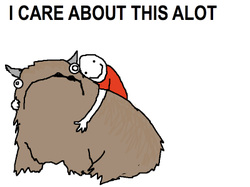
I is a subject pronoun. It will usually come before a verb in a sentence.
I like chicken soup.
If you are including another subject, place I closest to the verb.
Brad and I are going to see that scary movie.
Me is an object pronoun. It will appear after a verb or after prepositions.
He kissed me after the movie.
Between you and me, I think that movie was too scary.
Explanation: In this sentence, ‘you and me’ follow the preposition, ‘between’. ‘You and me’ are objects of the preposition. Therefore, they take the form of the object pronoun.
Now, let’s get to the fun part. This is a part of language that seems to be changing. It is a good example of how the grammar of a language follows speech and not the other way around. The traditional guideline has been that a pronoun following a form of the verb BE must be in the same form as the word before the verb.
It is I.
Explanation: ‘It’ is the subject. I is the subject complement. The verb correlates with the subject, and because the verb BE is used, the pronoun that follows it modifies the subject. I does not modify the verb, but rather the subject.
Our ears tell us that it is too formal to say “It is I”. As a result, you will most likely hear “It is me”. Do what you want when speaking. However, stick to the rules when writing.
One more thing: When speaking, use contractions. When using contractions, it is understood that the language is somewhat informal. As a result, do not follow the verb BE-subject complement rule.
Otherwise, sayings like, “It’s not you, it’s me” will really indicate ‘it’s you’ if you say “It’s not you, it’s I”.




 RSS Feed
RSS Feed